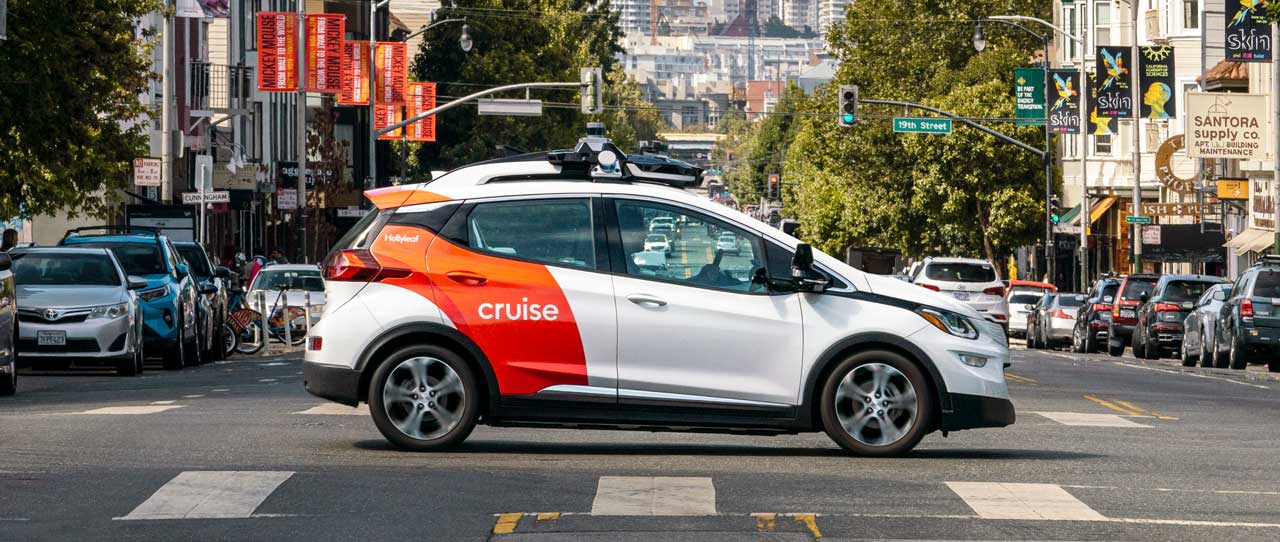Blog Post
4.9.2024
Cruise resumes manual driving as next step in return to driverless mission
Share

Cruise was founded in 2013 with a clear and focused mission: to make transportation safer and more accessible. In the ten years that followed, we’ve worked hard to build advanced self-driving technology and provided hundreds of thousands of driverless trips to riders on complex city streets in San Francisco, Phoenix, Austin, Houston and elsewhere.
In October 2023, we paused operations of our fleet to focus on rebuilding trust with regulators and the communities we serve, and to redesign our approach to safety. We’ve made significant progress, guided by new company leadership, recommendations from third-party experts, and a focus on a close partnership with the communities in which our vehicles operate. We are committed to this improvement as a continuous effort.
Looking to the next chapter, our goal is to resume driverless operations. As we continue working to rebuild trust and determine the city where we will scale driverless, we also remain focused on continuing to improve our performance and overall safety approach. To that end, Cruise is resuming manual driving to create maps and gather road information in select cities, starting in Phoenix. This work is done using human-driven vehicles without autonomous systems engaged, and is a critical step for validating our self-driving systems as we work towards returning to our driverless mission. This will help inform where we ultimately will resume driverless operations.
Cruise has a strong history in Phoenix and it is home to a large number of Cruise employees. It’s a city that supports AV and transportation innovation, and Phoenix leaders strive to ensure the metro area is an incubator for advanced technology. We plan to expand this effort to other select cities as we continue to engage with officials and community leaders.
Adaptive Fleet Learning
Cruise’s AV stack is based on AI technology that learns from information gathered through our driving experience and retrains and evolves our models continuously. The fleet learns from every intersection, construction zone, and road sign it encounters, and applies that knowledge to other environments and scenarios – much the same as a human driver learns, but with far more data and the ability to impart that continuous learning across the entire fleet.
During our operational pause over the last few months, Cruise maintained ongoing and extensive testing in complex, dynamic simulated environments and on closed courses, enabling continuous retraining and improvement. Now, we are building on that work to create high-quality semantic maps and gather road information to ensure future operations meet elevated safety and performance targets. And because no two cities are the same, we plan to conduct this manual and supervised driving in multiple cities - starting with Phoenix - to expose our AVs to a diverse set of driving environments and conditions as we prepare for future driverless service.
Steps Prior to Driverless Operations
The first step is identifying high fidelity location data for road features and map information like speed limits, stop signs, traffic lights, lane paint, right turn only lanes and more. Having current and accurate information will help an autonomous vehicle understand where it is and the location of certain road features. We also measure our perception and prediction systems against our elevated performance criteria, using trained safety drivers as a benchmark. At this stage, no autonomous systems are engaged and the vehicles will not carry public passengers.
Next, we’ll validate our AV’s end-to-end performance against our rigorous safety and AV performance requirements through supervised autonomous driving on public roads, in addition to the ongoing simulation and closed course driving we do. During this phase, the Cruise vehicles will drive themselves and a safety driver is present behind the wheel to monitor and take over if needed.
Safety is the defining principle for everything we do and will guide our progress through this process. As we begin this work, we have requirements in place that not only cover the safety criteria, functions and roadworthiness of the vehicle, but also include robust incident response protocols and extensive training and ongoing performance monitoring for the operators behind the wheel.
Commitments to Safety and Our Communities
Over the past several weeks we have communicated directly with officials, first responders, and community leaders in cities we’ve previously operated in to share updates on our path forward. We are committed to safely deploying our technology in close collaboration with officials and communities at every step.
Our goal is to earn trust and build partnerships with the communities such that, ultimately, we resume fully driverless operations in collaboration with a city.
As part of our commitment to improve our operations Cruise has implemented the following measures:
Established new leadership, and engaged more closely with experienced advisors from GM to support safety, legal, regulatory, and communications functions.
Hired an experienced chief safety officer to guide improved safety processes and procedures throughout the organization.
Established a cross-disciplinary regulatory team to guide engagement with regulators in regard to incident reporting.
Reviewed and strengthened key internal safety governance processes to incorporate more robust cross-functional review and leadership accountability.
Work is also underway to establish important systems and processes for ensuring safe operations across the company including:
Reforming and updating incident response and crisis management protocols to ensure more consistent, effective and transparent response.
Renewing internal training and reinforcing safety culture systems.
Reevaluating and reestablishing our safety target for supervised and driverless operations.
Reengaging with first responders to facilitate ongoing trainings for each precinct and fire house in the areas we intend to operate in.
Looking Ahead
We believe AVs will save lives and significantly reduce the number and severity of accidents on America’s and Arizona’s roads every year. AVs will also improve lives - including creating convenient and safe transportation options for the elderly and those with disabilities. As we begin this journey, we look forward to partnering with local communities to jointly achieve our shared mission of making transportation safer for all.